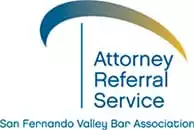What Are the Child Custody Exchange Rules in California?
Be sure there is peace and agreement when it comes to child custody. Here’s what to know about the child custody exchange rules in California.
Read now.
Introduction
It is tough on everyone when there are minor children between two parents that do not live together. Shuttling the kids from one parent to the next based on a custody schedule can eventually become routine. For some, this is all amicable. For others, not so much. Thankfully, California has some child custody exchange rules and programs that help to ease the situation entirely.
When Does the Child Custody Exchange Occur?
Child custody exchange is the moment when a child’s physical custody is transferred from one parent to the next. The child custody arrangements will include all specifics concerning this exchange, including the place, the time, and the manner. Because it is easy for emotions to run high during these moments, it is important to take the necessary steps to ensure a safe and successful child custody exchange.
Arranging Child Custody Exchange
Child custody exchange is often decided when custody arrangements are being made. There are a few things that you want to consider before you agree to anything, such as what you believe to be the most ideal time, location, and transportation.
Let’s look at each a little more closely.
Exchange Time. There will be a specific start and end time for each visit. And there can be no gaps. When one parent’s visitation ends, the other parent’s time begins. And the responsibility for the child changes at that time. In other words, whichever parent has custody during a specific time is the responsible parent throughout that entire time.
For instance, if there is an incident at school, it is the responsibility of the current parent to tend to the matter. So, if parent 1 has the child until 7:30 am school starts and then parent 2 picks the child up after school, parent 2 will be the responsible one should something happen during the school day.
Location for the Exchange. It is not uncommon for co-parents to use school or each other’s homes for the exchange location. It is easy, convenient, and just makes sense. Unfortunately, not all of these situations are amicable. If the relationship between the two is strained, then neither of these suggestions may be the most ideal location. Choosing a neutral location may be the best option. This can include a certain shopping center, library, gas station, restaurant, or even the police station parking lot.
The idea is for things to remain calm between parents (even when things are nowhere near calm) for the sake of the children. In these instances, a stipulation can be added to the order that states the person dropping off must remain in the car at the location so that there is no interaction between parents.
Transporting the Children. Your custody order regarding the exchange needs to be specific as to who is allowed to transport the children to and from the exchange location. For those who are amicable, it can be decided amongst the two how to handle these exchanges. The parent taking over custody may expect the other parent to drop off the children or he/she may be the one to pick up the kids.
Or for contentious situations, having a neutral party handle the exchange may be the best option. It should be noted that whoever is driving the minors needs to have a valid license, be insured, and have the proper restraints, if necessary.
Remember, these are going into your custody order so changing them will require you to go through the process to modify the order. So, make sure you are content with the outcome.
How to Have a Successful Child Custody Exchange
Whether you have a great relationship with the other parent or you are sharing custody on rocky ground, there are a few steps you can take to ensure you have a successful child custody exchange.
Bring a neutral party. If you feel uncomfortable meeting the other parent or feel as though you may encounter some unsafe behavior or harsh words, it is best to bring a neutral party with you. We aren’t talking about your sister or best friend, but someone more distant, such as a co-worker, parent of the child’s friend, or even a teacher.
Always be on time. Parents cherish the time they have with their children – and it is limited when sharing custody. If you want to start an argument or cause an issue, not being considerate of the other parent’s time will do it. Be respectful and be on time.
When they go low, you go high. Don’t battle with the other parent. If you feel like they are attempting to push your buttons or get you into a heated argument, handle the exchange and walk away. Not only does this keep things from escalating, but it is also much healthier for the children who are present.
Safe Exchange Program
California’s Safe Exchange Program is designed to assist parents in the transfer of children between each parent using a neutral party. The exchange is coordinated by the program so that the parents do not have to engage or even see each other. In fact, one parent may drop off and the other may pick up at two different times that are unknown to the other party. The program keeps children safe from heated conflict between parents.
The Safe Exchange Program may be ordered by the court as a means to protect the children or if you think it may be beneficial for your situation, you can voluntarily elect to participate.
Hire an Attorney
If you want to protect yourself during custody battles and exchanges, you need someone on your side to ensure that your rights are not interfered with. As you think about the best place for the exchange, when you want it to take place, who or how you would like the child to be transported, you need to make sure these requests are heard. Whether in court or in mediation, an attorney can fight for what you want using various techniques and skills that only experience brings. Your children are too important not to have an attorney on your side.
Are you in search for a certified attorney to represent you?
Let us help you find one today!


